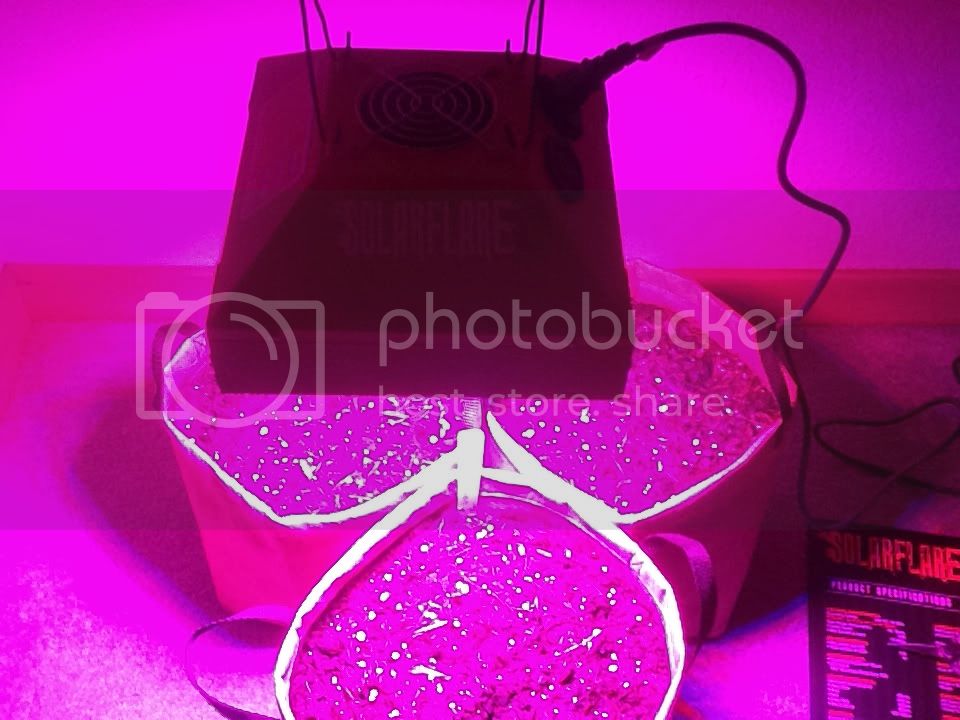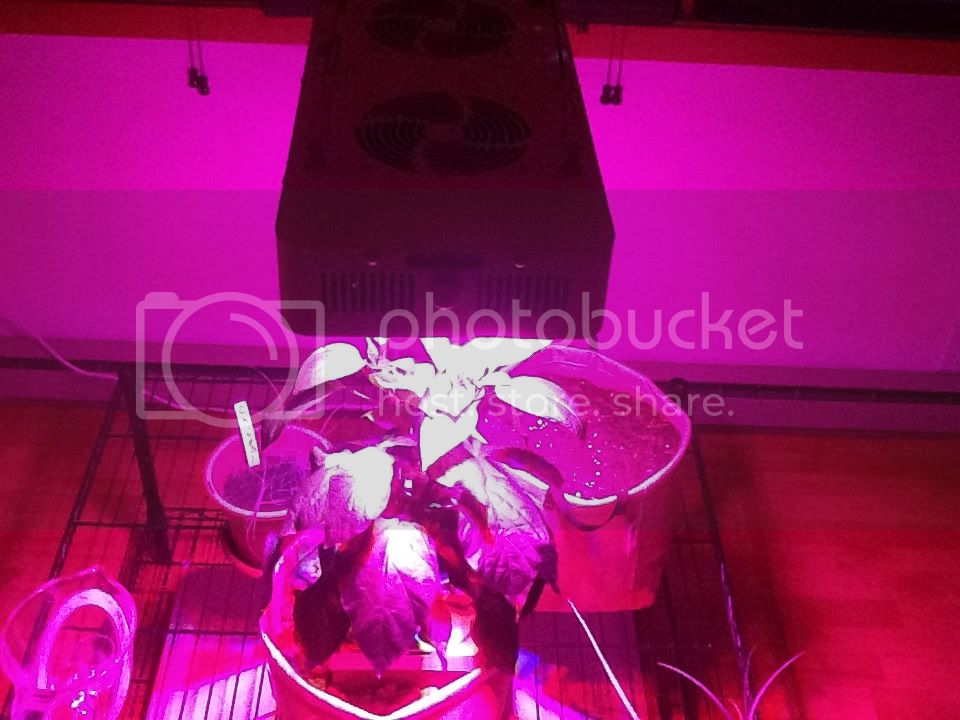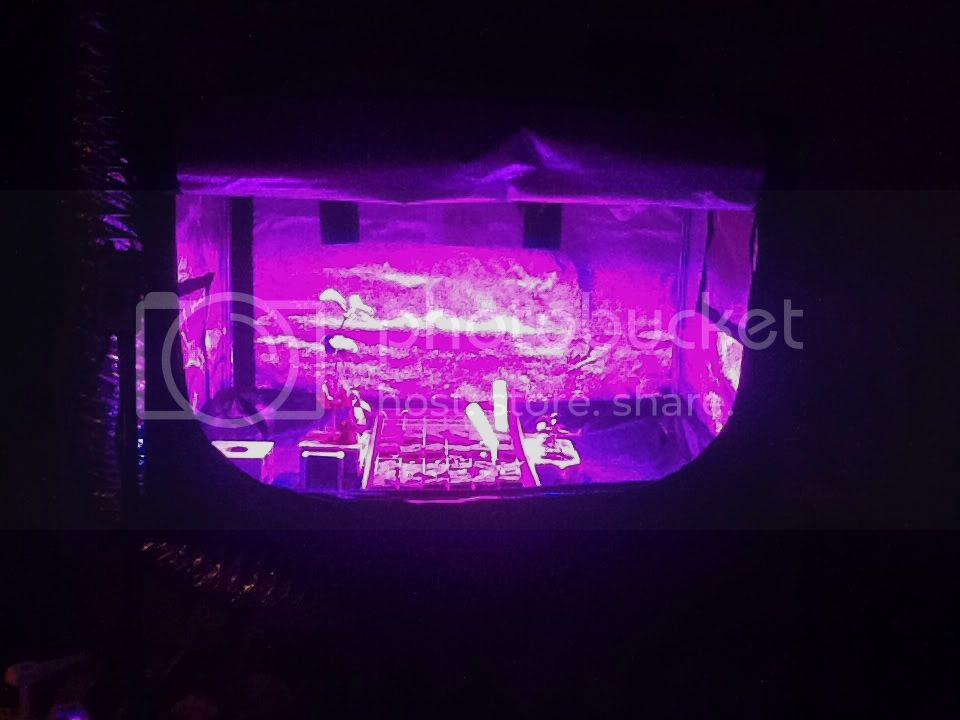Don't go buy watts when buying an LED panel,in general.
I'd check out the wave lengths,Lumens( Lumens/Watts)and coverage.
Most commercial panels cover, say they cover 9 or so sq. Ft.(3X3).
Watts is tricky.
They use watts because old incandescent bulbs ALWAYS put out X amount of Lumens per watt.
100 watt bulbs ALWAYS put out about 1700 Lumens.
So Watts WAS a good unit of measure for them.
Then they started with selling bulbs that used 100 watts but put out more lumens or put out the same lumens using less watts.
But with LEDS especially , that stuff means only how fast your meter spins.
I can get 1000 Lumens to a little under 2000 lumens from a 144 watt power supply depending on the LEDS I use.
I can't see how they can justify comparing watts as a unit of measure to say one panel is better or worse than another or comparing light sources to each other based on how fast your meter spins.
LEDs also vary in angle.
Think spot lights.
If you have a 1000 Lumen light with a 40 degree angle you'll get more light on the same area as a 120 degree angled one of the same lumen at the same distance away.
A lesser angled LED from farther away would cover more area than a higher angled with the same amount of Lumens.
I might not have explained it right for everyone but the basics are there.
I see lots of guys saying higher watt LEDS put out better Lumens than lower watt ones.
I don't get it.
Lumens are Lumens.If an LED puts out x amount of lumens that is what it puts out.
Different LEDS DO put out different percentages of the wave length they are rated to put out(dominant wave length) but all put out over 50% of their rated wave length.
LEDs change from LED to LED even in the same lot.So all the stuff about higher watt LEDS is only usefull in lab conditions where you can test each LED at specific voltages and Mili amps.
Since all LEDS are rated per Lot,Like finding the WOLDS HOTTEST pepper,everything is debatable.
They take the highest rated lumen led in the highest watt to use the data to sell their product.
Most so called data sheets are testing the LED at as high a pulse as they can use to get the highest Lumens in that wave length to sell their product.
Since plants use basically VISIBLE light I also don't see why they say LEDS can't be measure with a regular light meter in Lumens.
I don't care about the wave lengths that aren't visible light,plants don't use them or use them in such small amounts it doesn't matter in the long run.
I was impressed by one of the commercial LED panels posted above.
A very reasonably priced one in basically the wave lengths plants use.
Yes,you can make one for less but labor etc. probably equals out.
One of the few people I've seen post about commercial LED panels that are affordable and not just repeating sales stuff or trying to impress people with stuff that the average person can't control or would even need to deal with.
I'm no where near being an expert but DO know what I've been playing with for several years.
I don't have all the do dads some people have access to but my plants tell me what I need to know for the most part.
Actually LED panels are a different animal.
You have to forget about all the other light sources.
Watts means nothing in general unless you have the limens and wave lengths to go with it.
Since you are giving your plants specific wave lengths (50%+ of the wave length the LED puts out) you can't compare the Lumens per Sq. Ft. that other light sources need to put out.
With fluoros a rule of thumb was 2500 lumens at pot level for my shelves or I got some leggy plants(some didn't need that much,others needed more).
With LEDS in the right wave lengths 2000 Lumens at pot level gets a lot of purple leaves and sunburned at 18 hr days and some at 12 hr days.
Also I find LED plants don't need hardening off for sun scald.They do need to develop roots though in hot temps.
As stated above,I think if you cover as many wave lengths as you can in the red and blues as I posted above you'll probably be OK.
A lot of the other minor wave lengths plants don't need are there from the LEDs but are just not in as high amounts.
The sun puts out every wave length any plant uses so I like the cheap LEDs from China.
I know they put out 50%+ of the light they are rated at but also,in lesser amounts put out all the other wave lengths in the ballpark that my plants need/use.
I guess it's a matter of if you want to read a bunch of sales stuff or if you actually tried stuff out and your plants told you what works for them.
I only grow non bell peppers nothing else.
What works for my plants might not work on your weeds-non chile plants.

I started messing with 5mm LEDS.Not good for sprouting plants past a certain stage-lumens suck.
Less than 125 , 20,000MCD on 3X4 inch panels are a waste in general as far as total light goes.
But they are great to start early branching vetically under a horizontal star or 10mm panel.
They are great for veticle lighting for branching out your sprouts from day 1.
Like I said,you gotta know how to use every light source to get the most out of what you are using.
People thaught I spent way too much over the years making my panels.
I screwed up here and there but all it takes is a different resistor or whatever.
The Chinese LEDS have lasted about 4 seasons so far.They run 12-18 hours a day 365 days.
My plants like them.
Nothing I bought over the last 4 years has gone to waste.
I use everything I've made according to how I've learned to use them.
Too bad all LEDs don't come in ALL the wave lengths 5mm do.
5mm have the most wave lengths in general but they lack Lumens.
Boils down to what your wallet can accord and what you use ANY light source for or expect to use it for.
Costeve,great post for comparison of the commercial stuff if you google the panels you posted above.




